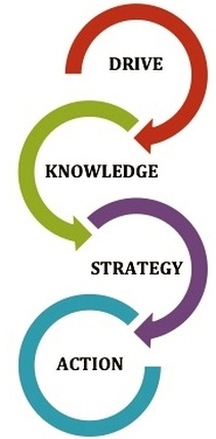Cultural intelligence (CQ) is a concept based on years of academic research across dozens of cultures, says David Livermore, president of the Cultural Intelligence Center in East Lansing, Michigan. That research shows leaders with high CQ have strength in four distinct areas, all of which are required to lead effectively in culturally diverse situations.

Drive. This is a leader’s level of interest and motivation to adapt cross-culturally. Conventional thinking holds that most people are naturally motivated to acquire cross-cultural capability, Livermore says, but that’s not always the case. Drive determines whether leaders have the confidence and resilience to deal with the challenges presented by intercultural work.
Knowledge. This dimension captures a leader’s level of understanding about culture and how that knowledge is applied to conduct business across borders. CQ knowledge not only is about grasping how a distinct culture influences the way you think and behave, Livermore says, it also includes overall understanding of the ways cultures vary from one context to another. It requires a macro-level understanding of ways that communication styles, prevailing religious beliefs, gender role expectations and more differ across cultures.
Strategy. This refers to leaders’ level of awareness and ability to strategize across cultures. Livermore says this capability requires “slowing the pace long enough to carefully observe what is going on inside our own and other people’s heads.” While many leaders can “wing it” in meetings with their own cultures, they need more forethought in cross-cultural contexts since many of the rules change.
Action. This is a leader’s ability to act appropriately in a range of different cultural scenarios. One of the most important components of this capability is knowing when to adapt to another culture and when not to, Livermore says. Leaders with high CQ learn which actions will—and won’t—enhance effectiveness in certain cultures and then act on that knowledge.
(TOASTMASTER magazine | MAY 2014 Page 25)


